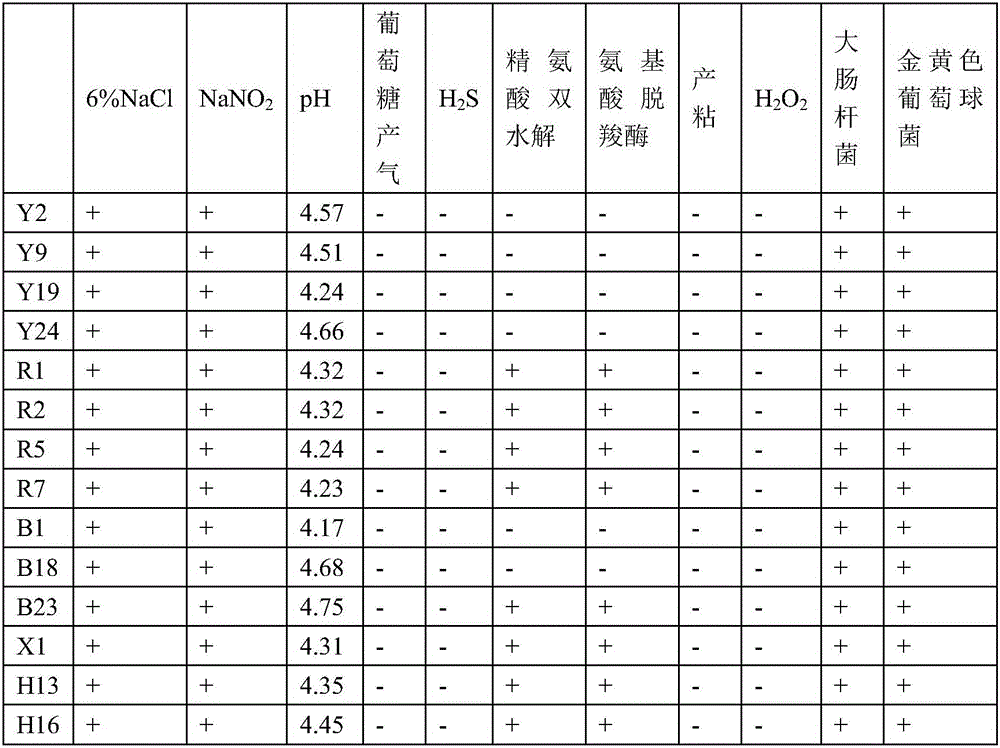Separating, screening and identifying method of lactobacillus sake
A Lactobacillus sake, separation and screening technology, applied in the directions of microorganism-based methods, separation of microorganisms, biochemical equipment and methods, etc., can solve the problems of cumbersome preparation steps, affecting use and promotion, and single acquisition method, and achieve a reasonable operation process. and simple effect
- Summary
- Abstract
- Description
- Claims
- Application Information
AI Technical Summary
Problems solved by technology
Method used
Image
Examples
specific Embodiment approach 1
[0019] Specific implementation mode one: this implementation mode is carried out according to the following steps:
[0020] Step 1: Preliminary screening of bacterial strains: firstly, select multiple cooked meat samples of equal weight, and each cooked meat sample corresponds to a portion of normal saline, and at the same time, divide each selected cooked meat sample in a mass ratio of 1:9 The proportion of the corresponding physiological saline is diluted to form a variety of bacterial liquids, and then the various bacterial liquids are sequentially inoculated into the cells containing CaCO 3 In the MRS solid medium, screen out multiple strains producing transparent circles, and then perform single colony culture on multiple strains one by one, and pick multiple single colonies for H 2 o 2 Enzyme contact experiment and Gram staining experiment, finally choose H 2 o 2 Multiple strains that are negative for enzyme contact and positive for Gram staining are multiple strains ...
specific Embodiment approach 2
[0032] Specific embodiment two: this embodiment is a further limitation of specific embodiment one, and the operation process of the antibacterial test in step 2 in this embodiment is:
[0033] Add 10mL of MRS medium at the bottom of the plate, pour the Oxford cup into the plate, pour in 15mL of LB medium after cooling the medium, take off the Oxford cup after the LB medium is cooled, and inject 100μL of the liquid medium supernatant, The diameter of the inhibition zone after 24 hours of culture.
[0034] In this embodiment, both the MRS medium and the LB medium are existing medium.
specific Embodiment approach 3
[0035] Embodiment 3: This embodiment is a further limitation of Embodiment 1. In this embodiment, the Gram-positive bacteria in Step 2 are Staphylococcus aureus; the Gram-negative bacteria are Escherichia coli.
PUM
 Login to View More
Login to View More Abstract
Description
Claims
Application Information
 Login to View More
Login to View More - R&D
- Intellectual Property
- Life Sciences
- Materials
- Tech Scout
- Unparalleled Data Quality
- Higher Quality Content
- 60% Fewer Hallucinations
Browse by: Latest US Patents, China's latest patents, Technical Efficacy Thesaurus, Application Domain, Technology Topic, Popular Technical Reports.
© 2025 PatSnap. All rights reserved.Legal|Privacy policy|Modern Slavery Act Transparency Statement|Sitemap|About US| Contact US: help@patsnap.com



